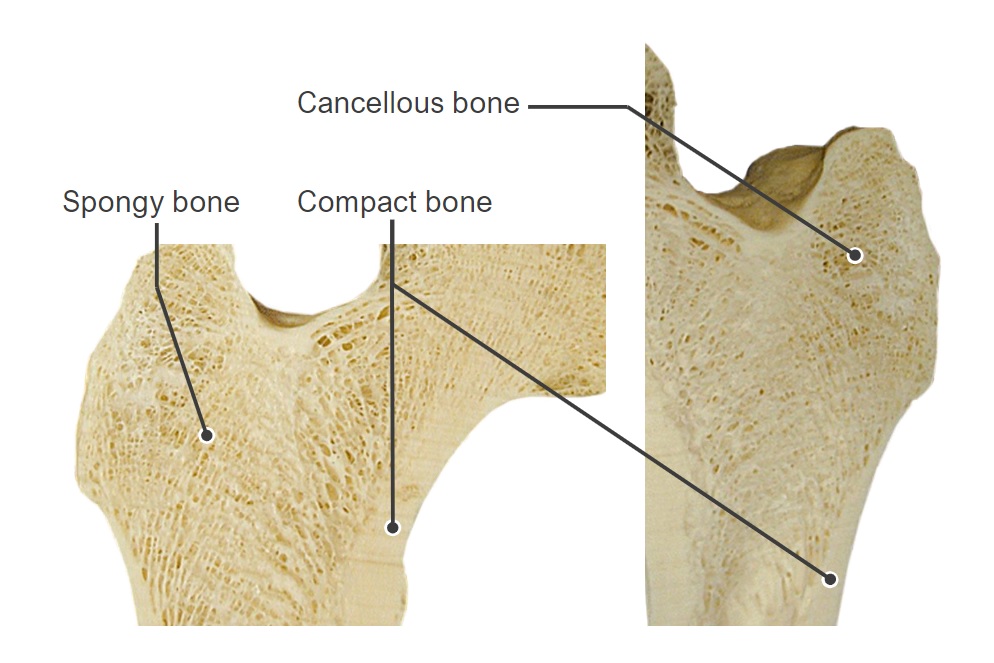Playlist
Show Playlist
Hide Playlist
Introduction to Bone Formation & Growth
-
Slides 09 Types of Tissues Meyer.pdf
-
Reference List Histology.pdf
-
Download Lecture Overview
00:02 I am going to describe bone formation and growth in this lecture. As I pointed out in another lecture in this histology course, there are number of very important functions of bone does and I will repeat them here because when we talk about bone growth and bone formation, the idea is to create bone in the adult can support these different functions such as protecting the heart, lungs and brain, vital organs, forming the skeleton and allowing us to move, supporting the body and body weight. It's also a mineral reserve and I will explain that towards the end of this lecture. It's a reservoir for calcium and phosphate. 00:55 And I have also given a lecture on bone marrow in this lecture series, in this histology course and there I described the importance of bone marrow and how it is housed within spongy bone and also the medullary components of young bones. At the end of this lecture, I would like you to be able to understand the processes of firstly bone formation, but then the difference between intramembranous ossification and endochondral ossification. 01:34 I will briefly describe how bone is mineralized to become a very hard structure and then also describe the structure of a synovial joint. So it is important that you understand each of these topics that I have listed on the left-hand side here. On the right hand side, you can see the head of the femur that is going to articulate with the hip bone. And I am going to describe just as an introduction to this lecture, some of the major components of a long bone, of a bone that makes up an axial skeleton, a bone that makes us move by the action of skeletal muscles on it. There are different sorts of bones that I will summarize here. First of all, you can classify bone as being very compact, such as the very firm bone that it is labelled there, on the very edge of this femur, and also it can be spongy or cancellous bone as you see labelled here as well. The spongy and cancellous bone tends to be up towards the epithelial areas of each long bones and that is the area where the bone marrow can be housed as well as in the medullary cavity, which is a central empty space along the diaphysis of a long bone. There are long bones, short bones, flat bones and irregular bones in the body. Think about the bones in our wrist, fingers, the long bone such as the femur one that I have described here, irregular bones again in our wrist joints and in our finger joints, flat bones in our skull, the cranium. So there are different sorts of bones just based on their shape and size as well as being either compact or spongy. 03:40 In this lecture, I am going to emphasize the diaphysis, the long part of the long bone and also the epiphysis you saw in the previous slide a section cut through the longitudinal axis of these long bones. And I showed you the spongy bone and then in the epiphysial region and also the very compact bone and the medullary cavity that creates the central empty space in the diaphysis of the long bone. And I want you to have a visual image of this bone and take this image through this lecture because what we are going to do in this lecture is go through some of the general simpler processes whereby this long bone develops during fetal life from a cartilage model or a cartilage template. And that is called endochondral ossification. I am going to briefly mention the formation of flat bones such as the bones in the cranium. They develop from a membrane of mesenchyme. No cartilage template precedes the formation of this bone. Therefore, it is called intramembranous ossification. 05:03 Development of bone or formation of bone purely from a membrane of mesenchyme.
About the Lecture
The lecture Introduction to Bone Formation & Growth by Geoffrey Meyer, PhD is from the course Bone Tissue.
Included Quiz Questions
Where is the medullary cavity located in a long bone?
- Diaphysis
- Metaphysis
- Epiphysis
- Diaphysis and metaphysis
- Metaphysis and epiphysis
What type of bone is the femur?
- Long bone
- Short bone
- Irregular bone
- Flat bone
- Sesamoid bone
The bones of the cranium are formed primarily from which of the following embryologic origins?
- Neural crest and mesoderm
- Endoderm and neural crest
- Endoderm and mesoderm
- Endoderm and ectoderm
Customer reviews
5,0 of 5 stars
| 5 Stars |
|
5 |
| 4 Stars |
|
0 |
| 3 Stars |
|
0 |
| 2 Stars |
|
0 |
| 1 Star |
|
0 |




